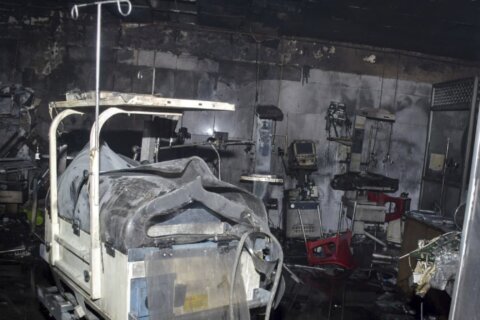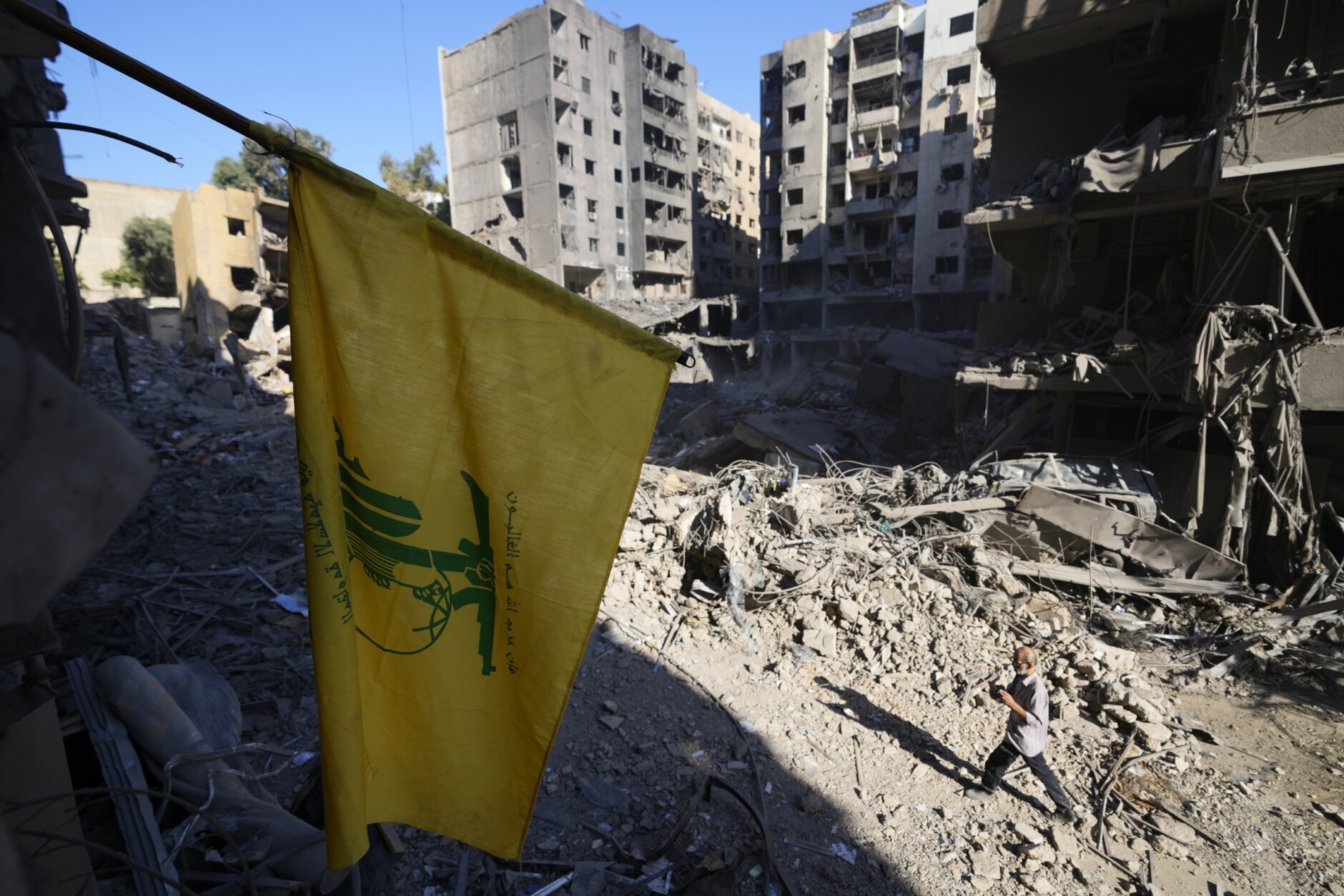
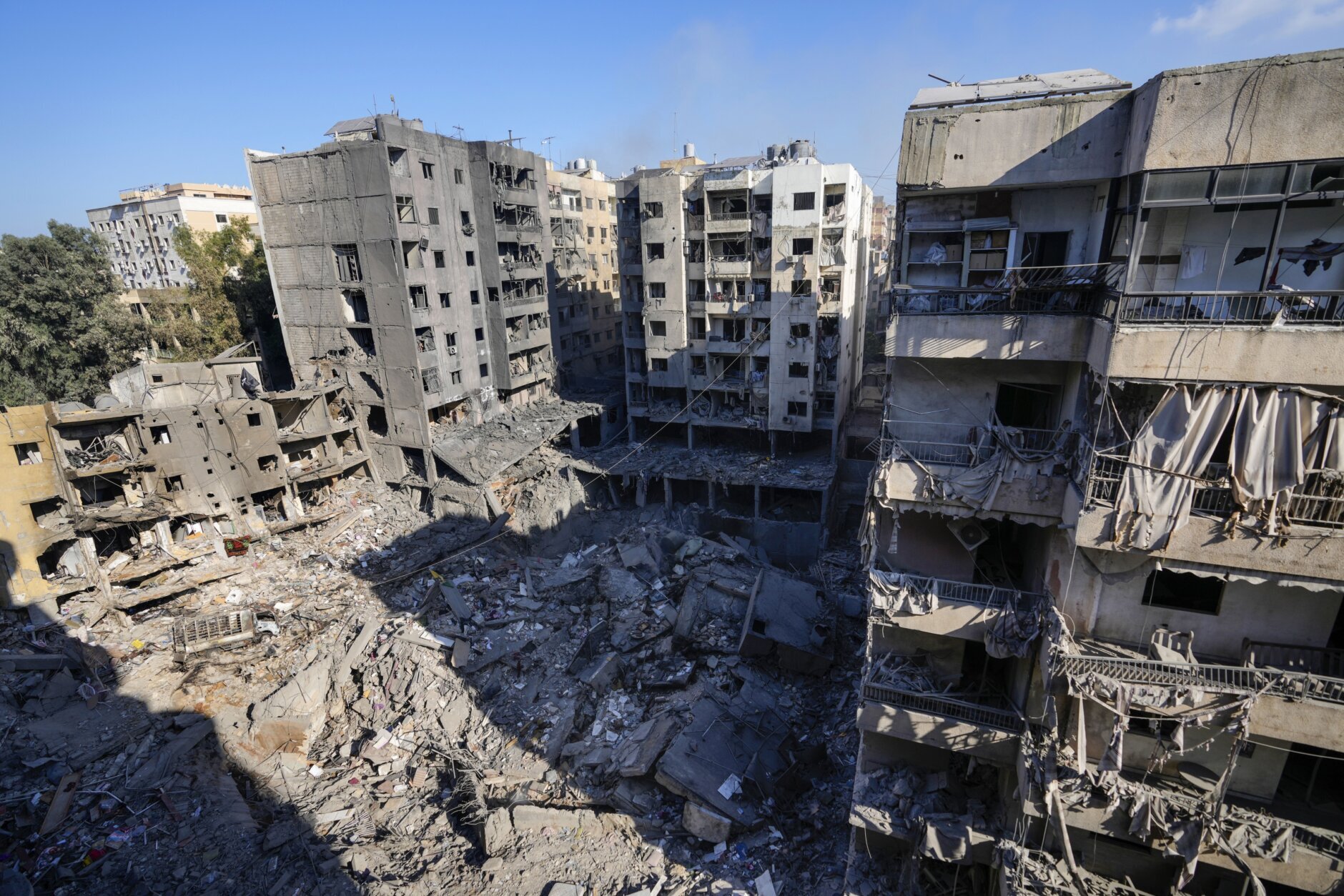
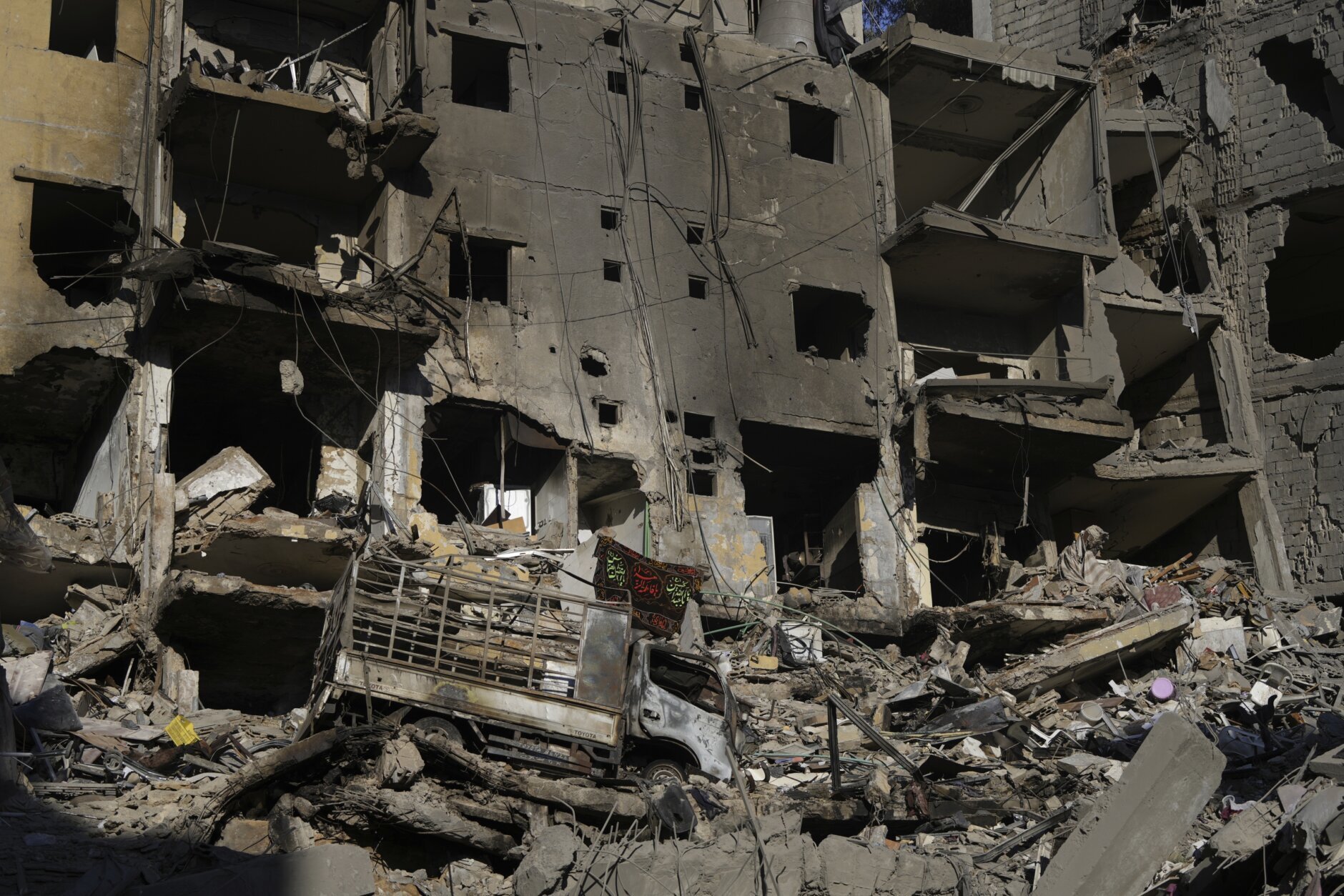
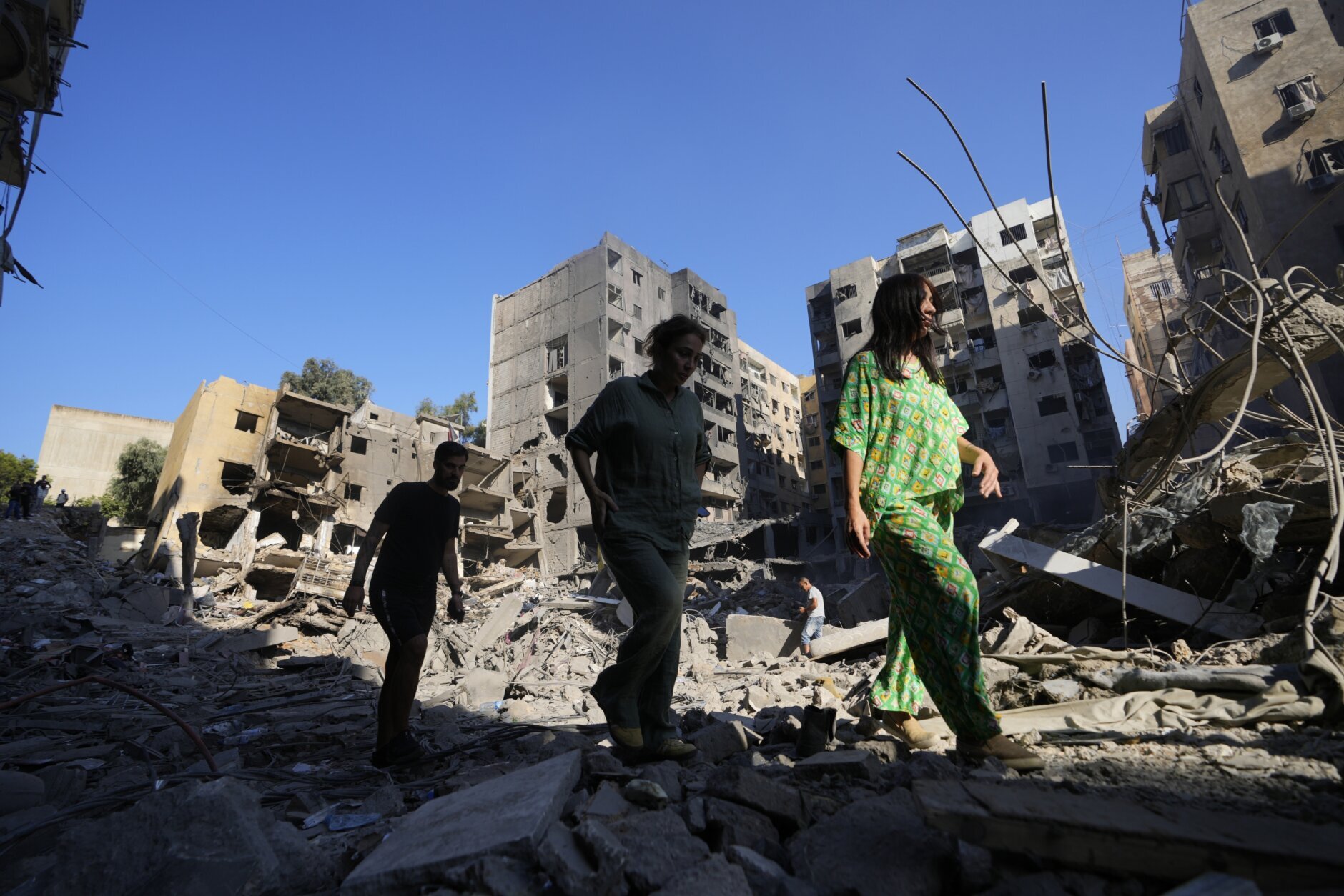
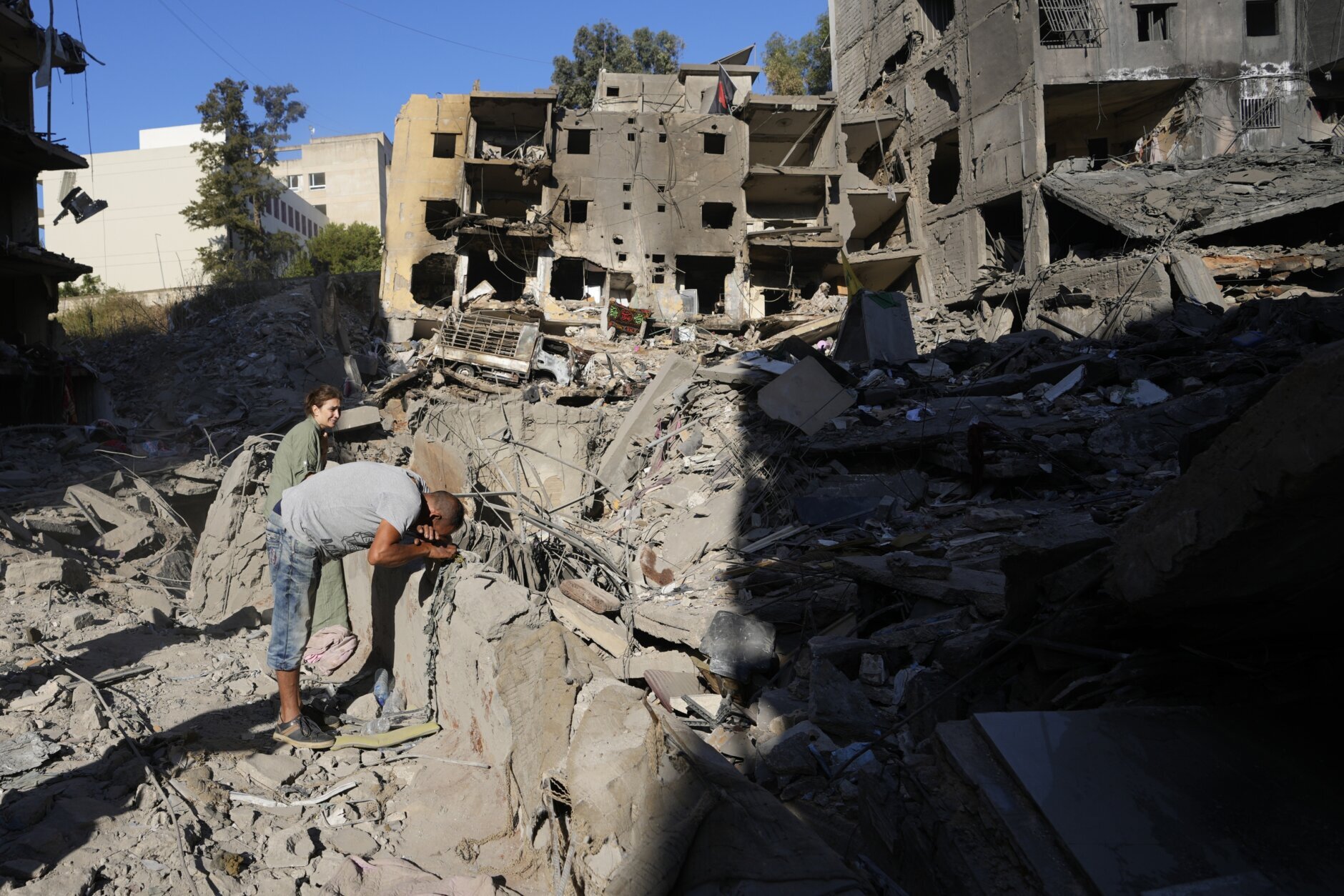
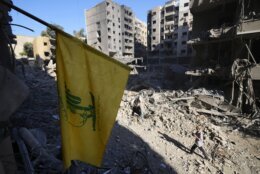
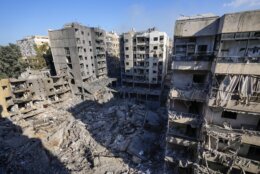
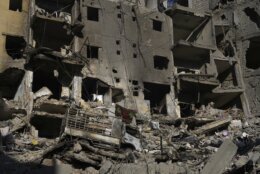
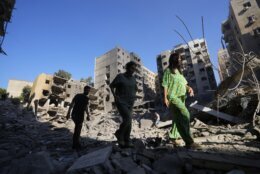
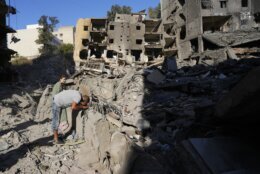
BEIRUT (AP) — More than two days after a massive Israeli airstrike that killed the leader of the Hezbollah militant group, smoke is still rising from the smoldering wreckage.
Israel said the Friday night strike targeted a meeting at an underground Hezbollah compound. The blasts leveled multiple high-rise apartment towers in the densely populated predominantly Shiite southern Beirut suburb known as Dahiyeh.
Hezbollah confirmed in a statement Saturday that its longtime leader, Hassan Nasrallah, was killed in the strike — a huge blow for the group he had led for 32 years.
On Sunday, Associated Press journalists saw smoke still rising over the rubble as people flocked to the site, some to check on what’s left of their homes, others to pay respects and pray. Some were there to simply inspect the destruction.
Residents of Beirut heard up to 10 explosions following the Friday strike that targeted an area greater than a city block, reducing several residential buildings to a jumble of pancaked concrete and twisted steel. The buildings sank into the ground, leaving a cleared-out area bigger than a soccer field.
Israel on Saturday released videos it said were of the warplanes that took part in the strike, showing at least eight F-15Is, but it didn’t provide any comment on the type or number of bombs used. Experts said the blasts and destruction left behind were consistent with the 2,000-pound (900-kilogram) -class bombs, likely designed to explode after penetrating structures.
The video showed the eight warplanes fitted with munitions consistent with American-manufactured BLU-109 penetrator bombs of the 2,000-pound class bomb; and a JDAM harness and tail kit, which is a precision guidance system.
The components, which together make up the GBU-31, have recently been transferred to Israel by the U.S., crisis and weapons researcher Richard Weir, from Human Rights Watch and currently in Beirut, told the AP. The bombs are known as “bunker busters.”
The Israeli military said the warplanes took off from Hatzerim, an airbase in southern Israel. The military also released radio communications of the commanding officer of the Israeli Air Force and the commander of 69th squadron after they carried out the strike.
Onlookers at the site Sunday clambered over large slabs of concrete, surrounded by high piles of twisted metal and wreckage. Several craters, likely used by rescuers to penetrate under the site of the explosion were visible, some of them apparently up to 30 meters (100 feet) deep.
A few Hezbollah workers were using a bulldozer to excavate around one of the craters, some of them apparently dug by rescuers to reach the dead. State security and investigators were nowhere to be seen.
The AP footage provided one of the closest looks at the site of the assassination and the extent of the destruction it caused.
So far, six deaths have been confirmed at the site, along with dozens of injuries, but it is not clear if the diggers are still looking for bodies. Some people on the scene Sunday said their relatives were still missing.
A woman wearing the black head-to-toe robe known as the chador stood on one side, reading from the Islamic holy book, the Quran, as a group of bystanders sobbed. One man collapsed in tears after seeing the immense destruction.
“Ya Sayyed, Ya Sayyed!” he cried, his head resting against a wall, as he referred to Nasrallah by his honorific title.
“Our morale is high and the struggle shall continue,” said Ali Rahhal, 30. “From here, from the heart of Dahiyeh, we say ‘labbayka ya, Nasrallah’,” he said. The Arabic phrase, which means “at your service, Nasrallah,” was often chanted by supporters at Hezbollah rallies.
___
Associated Press writer Fadi Tawil contributed reporting. Sarah El Deeb in Beirut contributed to this report.
Copyright © 2024 The Associated Press. All rights reserved. This material may not be published, broadcast, written or redistributed.

